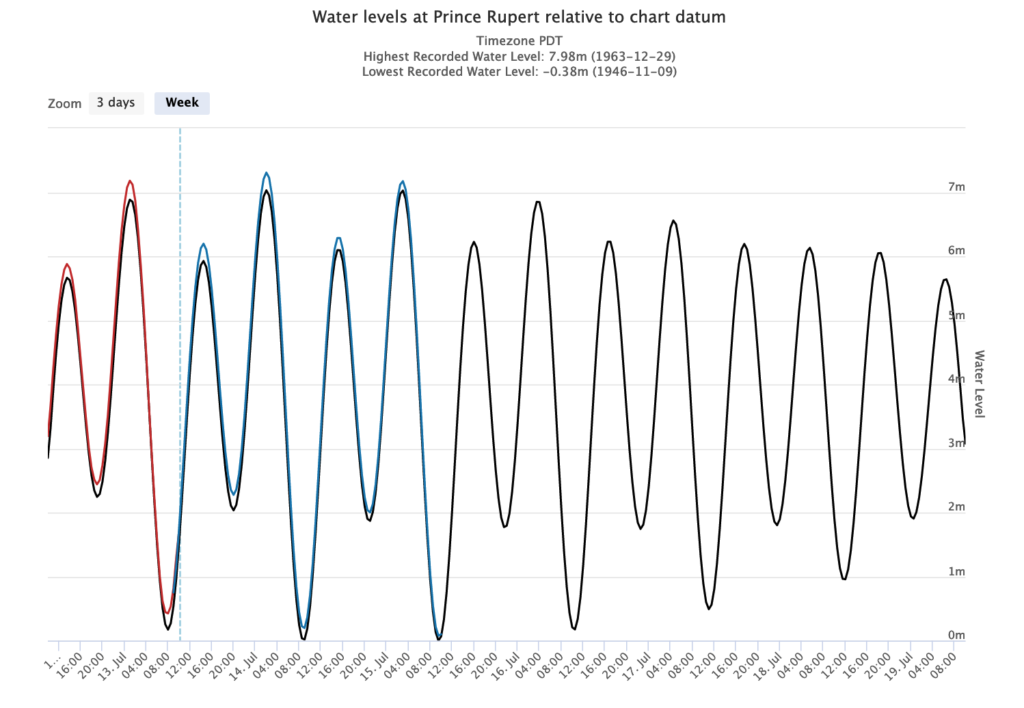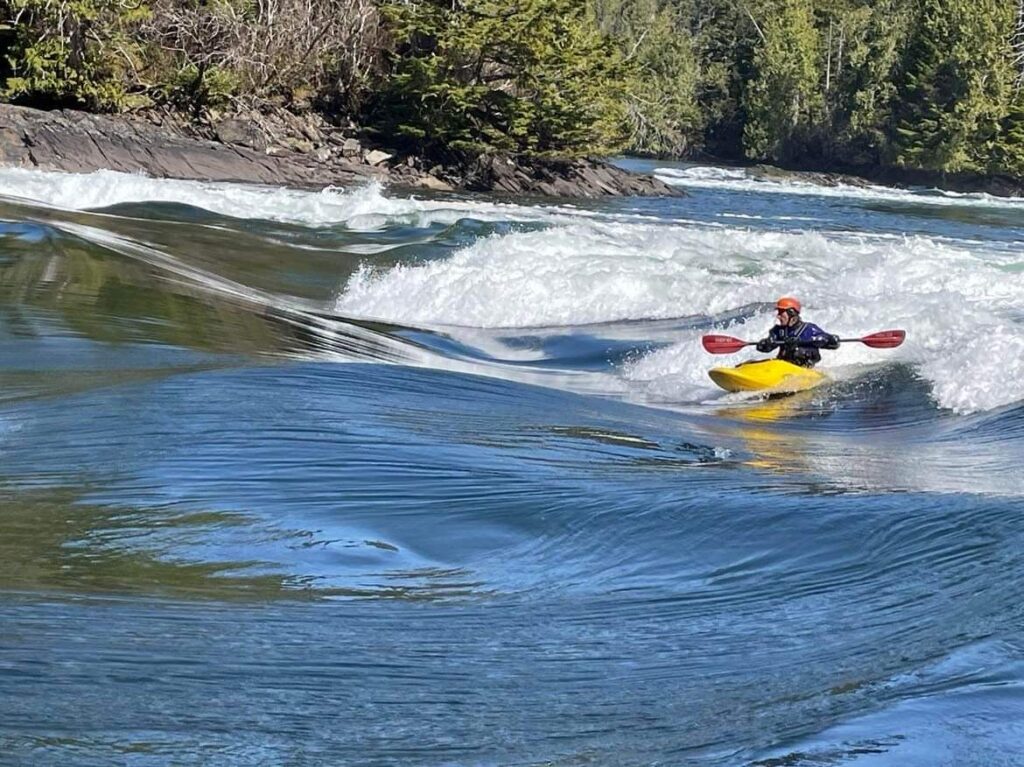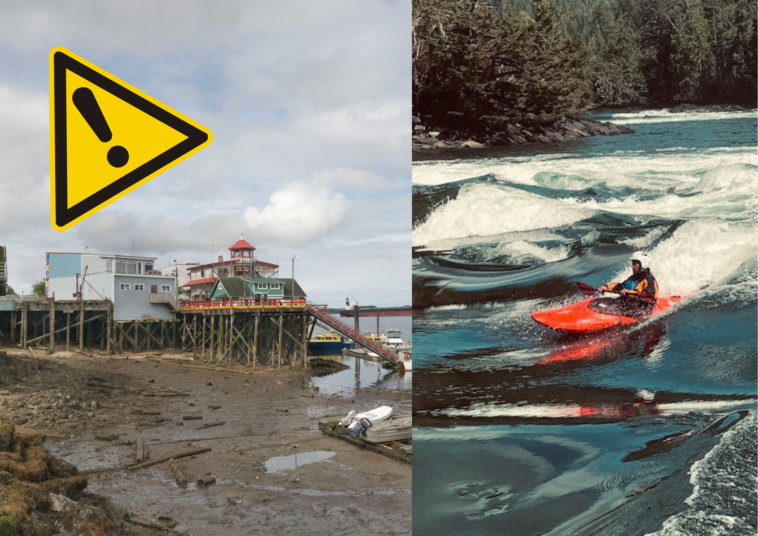Extremely low tides have everyone on the alert on BC’s coast this week. Some people plan to play in them. Others aim to explore tidal zones that are usually out of reach. For others, safety is the concern.

The tides are not expected to reach record lows – not quite, but they’re coming pretty darn close.
Environment Canada’s tide table for Prince Rupert, for example, shows that the lowest tides will occur on Thursday and Friday morning, at 0 meters. That’s just a smidgen above the lowest level on record, -0.38, in 1946.

And with more moderate summer temperatures this week, B.C. is not expected to again experience last year’s crisis. In 2021 a record heat wave, or “heat dome,” linked to climate change, led to the deaths of 619 people while reportedly killing billions of small marine animals trapped in the sun by low tides.
The dramatic tides will lure whitewater kayakers to the spectacular Butze tidal rapids near Prince Rupert this week, said recreational kayaker Joshua McDonald. “It’s a world-class tidal surfing destination,” he told West Coast Now. “It draws kayakers from all around the world.”
“All of that water is coming in at a high velocity, but you’re just sitting in a standing wave,” he said. “It’s quite an experience.”
McDonald, a local teacher, is one of the kayakers captured in a recent documentary about Butze Rapids, in which a visiting kayaker from Japan described the experience as “life-changing.”
Steve Milum of Skeena Kayaking, which rents sea kayaks, said the extreme differential between low and high tides makes everyone on the water aware of the risks.
On Wednesday, his company warned kayakers to be careful in the rush of water, as the tide moved from less than one foot to 20 feet high.
Milum noted the tides are an opportunity for construction projects. In a previous job, he said, he worked on driving piles into the seabed for a project to restore the North Pacific Cannery in Port Edwards. Tides meant “we could get a lot of work done,” he said.

“We’d wait for bigger tides to replace pilings, working by hand. We would go out and dig holes when the tide was out, cover them before the tide came in, and when it was high, we could float in piles,” Milum recalled.
Tides, the rising and falling of the ocean along coasts, are caused by the gravitational pull of the moon and the sun in relation to the Earth. Periodical changes in the moon’s orbit, the lunar nodal cycle, can cause extreme tides in the summer.
This week’s tides are especially dramatic.

“Tides change on a few time scales based on where the moon is and how near it is to the Earth, depending on cycles, some of which change every day and some of which last nearly 19 years,” reported B.C. news site Capital Daily.
They’re “cycles of cycles of cycles,” Wendel Raymond, a nearshore ecology research scientist at the University of Washington, told Capital Daily. “What’s special about this year is that several of those cycles are aligning at once—and the result is a dramatic downward swoop to the lowest low tides.”







